When I first started repairing antique wicker furniture back in the mid-1970s, I would get in a lot of Victorian-era wicker pieces which quickly became my favorite pieces to restore.
This favoritism was due to the excellent craftsmanship of the period and the use of first-growth, quality cane, and rattan reed materials.
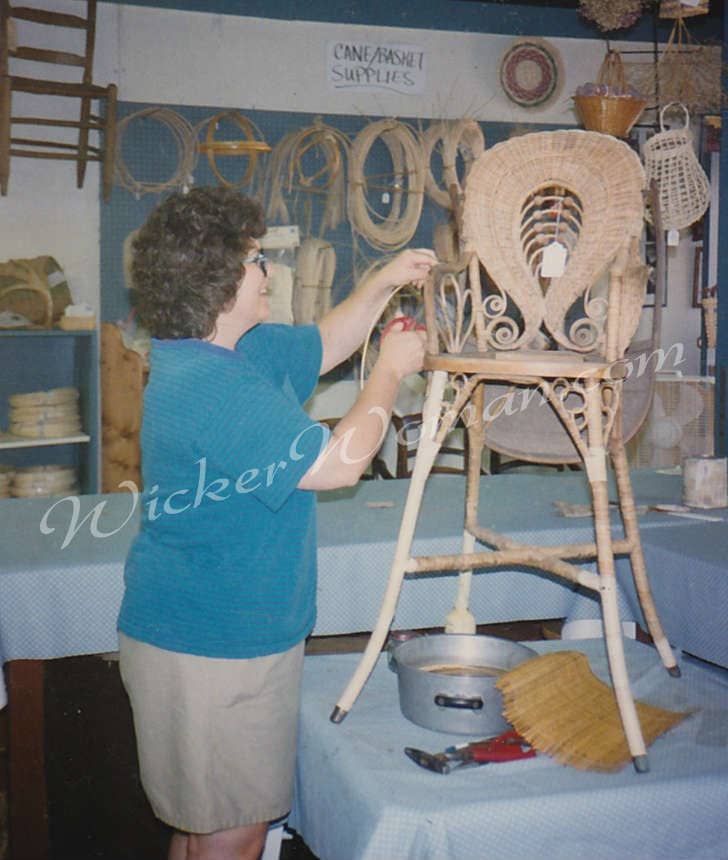
But there are several other styles made in various eras that you might be interested in hearing about and seeing some pictures of, too.
Although wicker pieces have been made since the beginning of recorded history, I will just be talking about the American wicker furniture industry from the 1840s-1940s here in this blog post.
Early Wicker 1840s-1860s
Wicker furniture from the mid-1800s was light and airy, typically made from rattan poles, strand cane and strips of rattan reed or willow osiers, and was simplistic in its design.
Most mid-1800s wicker was simple in design, with a few exceptions. One exception was the elaborate and distinctive esparto braided design (woven with very fine, thin willow osiers or Esparto grass) created by the Colt Willow-Ware Manufactory.
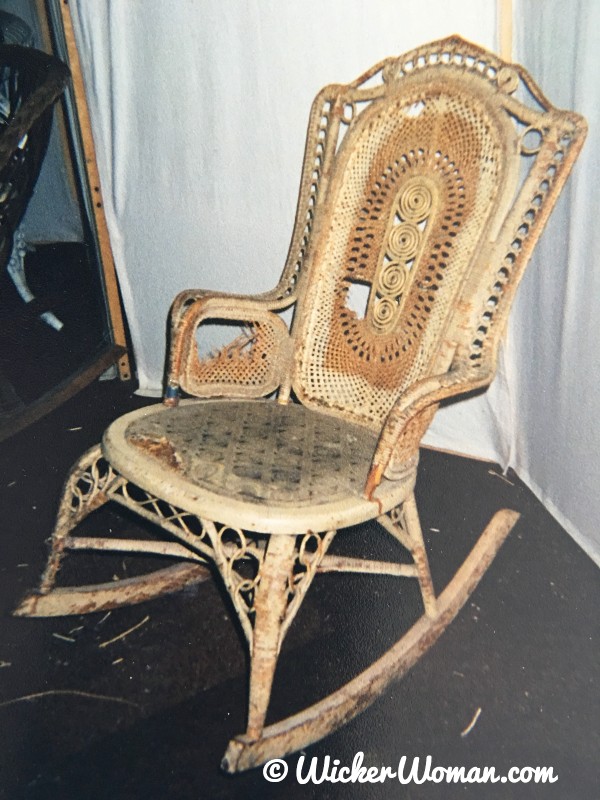
of this Victorian wicker rocker
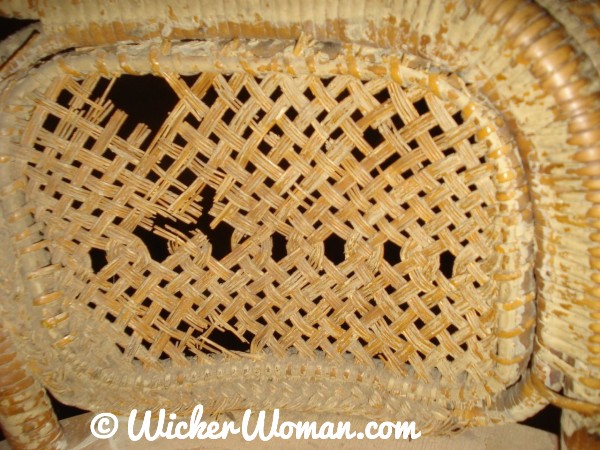
of this Victorian wicker rocker
Victorian Wicker 1870s-1890s
Victorian wicker furniture, popularized during Queen Victoria’s reign, was extremely fancy with each manufacturer trying to outdo the next.
Typically, they were made using a hardwood frame, with close-woven cane webbing seats, with legs wrapped in rattan reed strips, the inner pith of rattan.
These designs were characteristically heavily embellished with scrolls, curlicues, beading, chain loops, Spider Web and Star of David woven cane backs, with close-woven “set-in” machine cane webbing for seats.
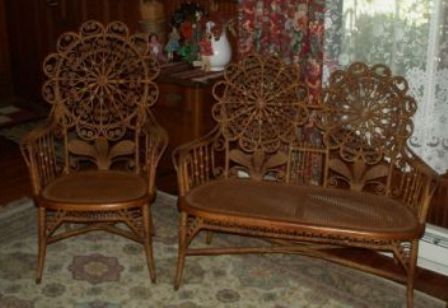
The Victorian era was called the “Golden Age of Wicker” during the later part of the century. Enormously popular during this time period was also the wicker baby carriage or “perambulator.”
Read More–What is rattan reed?
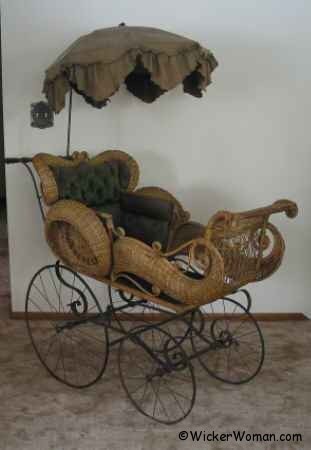
Turn of the Century or Progressive Age 1900s-1915s
This new progressive era welcomed in a decidedly different style with the ever-popular reed and also with the reintroduction of willow.
Styles changed to the simple, sleek look of the reformist Progressive era called the Mission, Craftsman, and Bar Harbor styles.
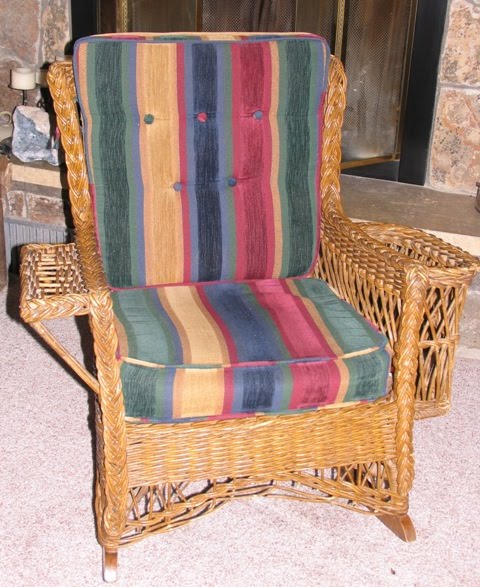
With its open weave, clean, lattice-look devoid of embellishment, this wicker became very popular furniture for summer cottages, Adirondack lodges, and seaside resorts.
Then in 1904, the newly invented paper fibre wicker was introduced. Paper fibre wicker was created to simulate reed wicker because an embargo blocked the importation of rattan reed at the time, making rattan reed a scarce commodity.
Read More–What is paper wicker?
Weaving with rattan reed and willow took competent and highly skilled workers. But with this simple, man-made, manufactured, continuous strand material no longer took skilled workers to create, so it was much cheaper to build than its reed counterpart.
Machine Age or Modern Age 1915s-1930s
In 1917 the mechanized Lloyd Loom was invented, producing woven paper fibre “sheets” or “fabric” and took the industry by storm.
Not only did this machine lessen the cost of the hand-woven wicker for the customer, but it also made massive amounts of easily affordable wicker available to the public.

Both the machine-made Lloyd Loom wicker and the handwoven paper wicker were now painted.
During the 1920s paper wicker often featured diamond patterns in the backs and sides, which were called the “Art Deco” style. Set-in upholstered cushions were the rage in couches, rockers, and chairs, then too.
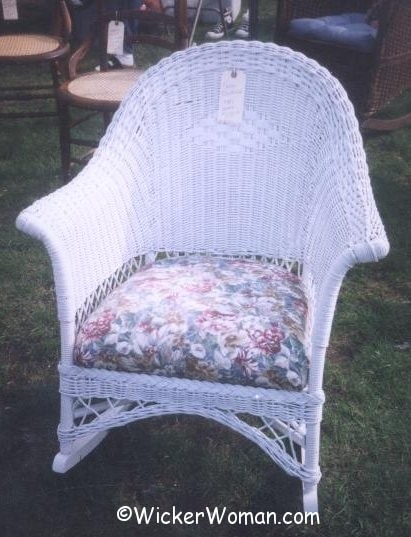
Toward the late 1930s, yet another new style of wicker was introduced called the Modernist “stick wicker.”
This type of wicker furniture was made from sticks, poles, or strands of rattan reed and/or willow rods.
By this time, the embargo on rattan reed had been lifted and manufacturers were once again cranking out wicker furniture products in mass.
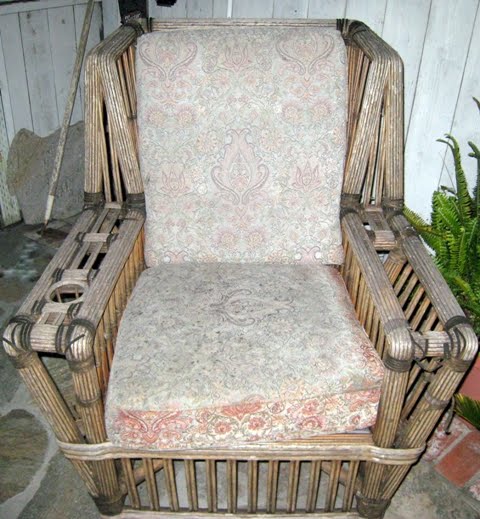
At the very end of the 1930s and into the early 1940s, wicker furniture took a drastic turn with the advent of tubular steel “modern” furniture. Shortly after that, wicker furniture lost favor with the buying public.
Luckily for us wicker furniture lovers, wicker furniture seems to make a resurgence in popularity about every 25 years.
Some excellent reproductions are being made now, as well as good quality all-weather pieces to use outdoors on your decks, patios, and poolside.
Read More–How to care for your wicker furniture?
Please remember to always take care of your antique and collectible wicker furniture. And never leave it outdoors where the elements can destroy those precious, irreplaceable antique pieces.
“Once those fine old wicker pieces are gone they are gone forever. You can’t make new ‘antique’ wicker to enjoy during your lifetime.”
The Wicker Woman–Cathryn Peters
Do you have antique or collectible wicker furniture, too? Please let me know in the comments below if you own wicker furniture and what wicker era yours is from.

What are your thoughts about this blog post?
Leave your comments below and share with your social networks!
~~Live Well, Laugh Often, Love Much ~~
Happy Weaving, until next time!


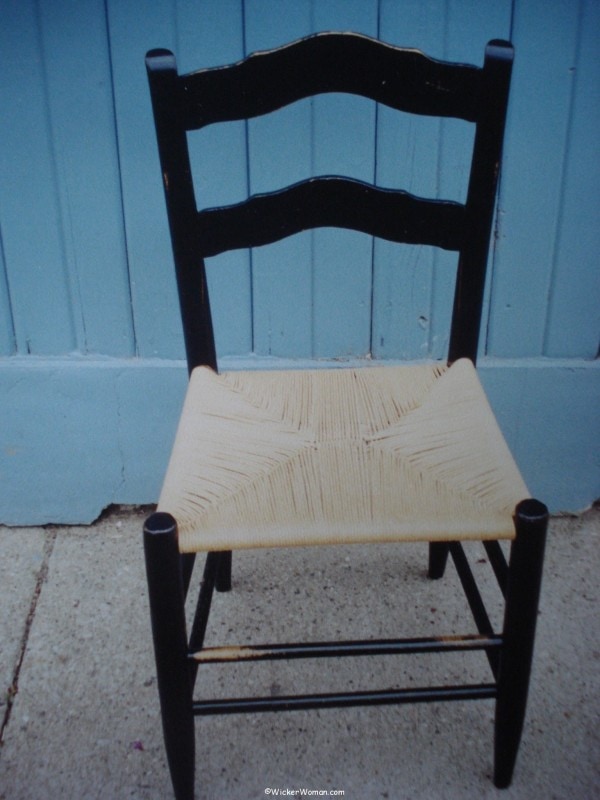
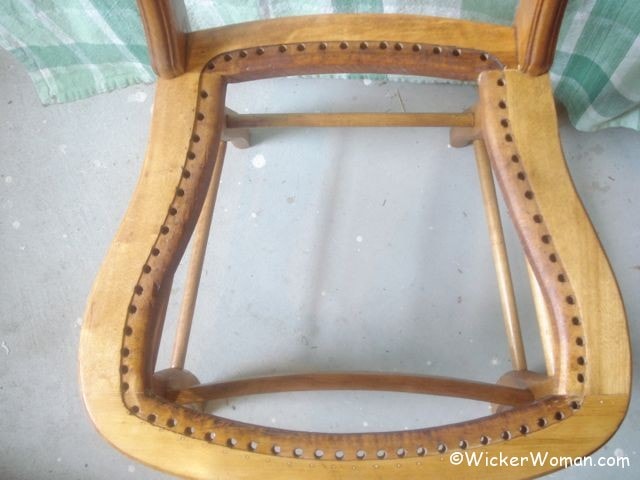
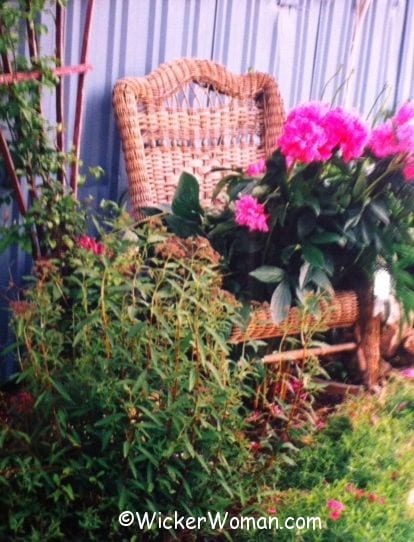

HELLO
I HAVE A RATTAN/WICKER VINTAGE CHILD HIGHCHAIR
I WOULD LOVE TO FIND IT A HOME… ITS BEEN IN MY FAMILY FOR MANY YEARS
ANY THOUGHTS?
THANKS
LYNDA ULRICH
ELIZABETHTOWN, PA
Lynda,
You could check with the seatweavers and wicker repair specialists here on my Furniture Repair Directory to see if any of them can help you find a home for your child’s highchair.
Or maybe put an ad in the Facebook Marketplace or if you have any online neighborhood sales markets, you might try that avenue also. Another way might be to take it to an antique shop or mall to see if they’d like the highchair. Good luck and I hope this helps and at least gives you some ideas.